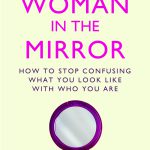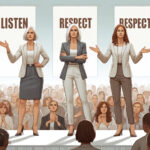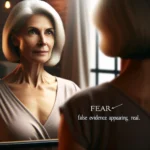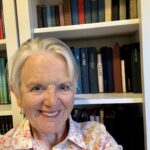Looking in the Mirror
Looking in the Mirror
‘We’re never good enough, smart enough, pretty enough, tall enough, thin enough … We look in the mirror and say things to ourselves that we would never say to other people … Women are experiencing a self-esteem crisis …’
‘… Why does our inner struggle with identity and self-esteem translate directly to weight and appearance concerns?’ (from the Introduction to – The Woman in the Mirror – How to Stop Confusing What You Look Like with Who You Are.
Dr Cynthia Bulik, author of The Woman in the Mirror, reminds me of my pocket rocket, two-year-old grandson. Both are lively, alert, have lots of energy, are always on the go; both have very busy minds; both are entertaining, innovative and, well, it’s hard to guess what they might do next. Both have a passion.
My grandson loves numbers – on a walk to the park or shops in the stroller, he continuously reads car registration plates, letter box and street numbers, supermarket poster specials, advertising sign phone numbers. On the swing in the park he counts every push – all the way to 100 (at which point my arms get tired). At home, in my little Myne Cottage, playing cards provide amusement. At age two, he already seems to be playing ‘Patience’. When offered a jelly snake as a treat he turns it into a number, such as a ‘6’ or a ‘9’, before grinning widely and devouring it. His self-esteem is very healthy indeed.
I don’t know what Dr Bulik was like as a toddler but I’m sure she was a pocket rocket too. There is just one difference to that of my grandson. She was a girl. A girl who defied the odds, as a female, to rise and become a leading, shining light in researching the cause of eating disorders. When I first met Dr Bulik at the 2009 NEDA Conference, Minneapolis, I thought ‘wow’. She was talking about genetics with the theme “Eating Disorders: The Science You Need to Know”. She was talking quickly, energetically, and lights were going on everywhere in my brain. I have come to know that this is Dr Bulik’s way – her talks are always like bubbling brooks, full of ‘the new frontier’ in cracking the code of the eating disorder illness. She makes science sound interesting, like it is a mystery and these are the clues; like she is zapping ‘ED’, bang, bang, bang, and if anyone can, she can.
But Dr Bulik is more than a scientist. She is a mother of three. (‘How did she find the time?’ I wondered) and a psychologist, and the list goes on. She is a lead author in the chapter on ‘Couples therapy for anorexia nervosa’ in A Collaborative Approach to Eating Disorders, and a lead author in a text book that I am editing on binge eating disorders to be released next year. Her high standards of professionalism make her a delight to work with. And I’m only one of many, many people she works with and leads.
But Dr Bulik does more than write academic papers and books. She writes for us – ordinary people – too! In a language we can understand, relate to and adapt in our lives. First there was Crave: Why You Binge Eat and How to Stop and now there is The Woman in the Mirror – How to Stop Confusing What You Look Like with Who You Are.
This book is a ‘must’ for females of all ages. I will share my copy of The Woman in the Mirror with my daughter, daughters-in-law, women friends of all ages – because there is wisdom in this book for each of us. I wish it had been around when I was a little girl for my mother to read. I wish my sister had read it, too. Who knows, maybe then I would not have developed anorexia at age eleven. Or if I did, quite likely my recovery would have taken place in 44 weeks rather than 44 years!
The Woman in the Mirror looks at why girls and women struggle with identity and self-esteem – a struggle that often manifests as an obsession with bodily imperfections. (Do you glance sideways in the store window when you walk along the street? Alas, I must confess that I do – to make sure that my t-shirt is pulled down at the back, of course). The book is divided in two sections – firstly, how we see ourselves from kindergarten to the nursing home; and secondly, intervention. This is a book that will help you help yourself. You can learn how to be your own inner coach, something that I spent years trying to do, and which was essential to gaining freedom from ‘ED’.
I feel honoured to be mentioned in The Woman in the Mirror: in the chapter “Protecting the Next Generations”, under ‘Ten tips to teach your daughter about a healthy relationship with food’. I am quoted under point number five: Watch for strange or restrictive eating habits. … June Alexander, a fifty-nine-year-old grandmother who struggled with anorexia and subsequently bulimia from ages eleven to fifty-five, says she often shunned food until after six p.m. The coauthor of My Kid Is Back: Empowering Parents to Beat Anorexia Nervosa worried that if she ate earlier in the day she would be unable to control herself and would eat too much.
Yes, I did worry, and the sad thing is that I worried about this in my adolescence, twenties, thirties and forties. I was aged forty-seven when a wonderful therapist, Belinda Dalton, explained the illness and my thinking patterns and behaviours in a way that helped me enormously in dismantling my ‘ED’. Eight years later, I was free. Free to eat three meals and three snacks a day, and free to live MY life. If you worry about your weight even a little bit; if you diet, purge, punish yourself with exercise; if you are not feeling happy with who you are, The Woman in the Mirror may help you feel more comfortable with your self. Very likely this book will help you value yourself not for your appearance, but for who you are and what you contribute to the world. Nothing more important than this.
Thank you, Dr Bulik:-)
![WomanintheMirror_cvr July 2011[1]](https://lifestoriesdiary.com/wp-content/uploads/2012/02/WomanintheMirror_cvr-July-20111-150x150.jpg)






